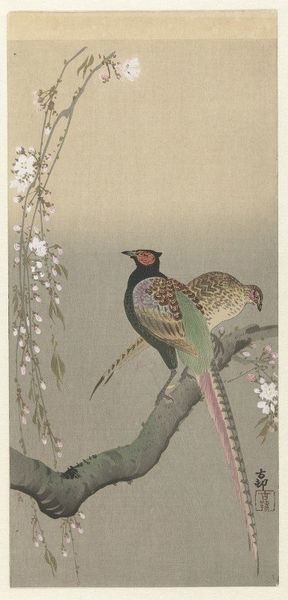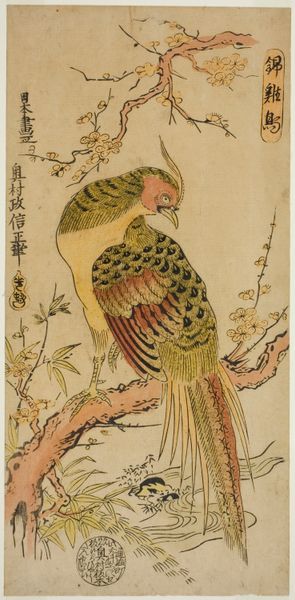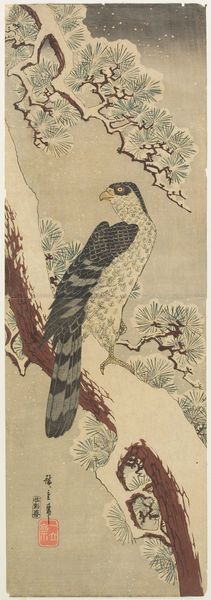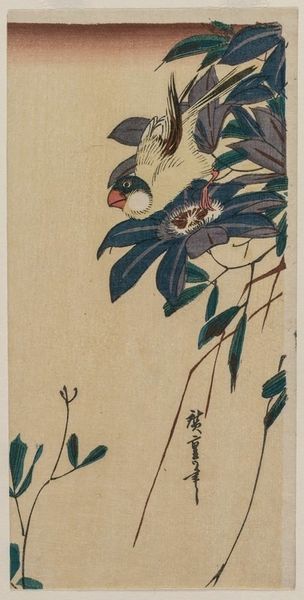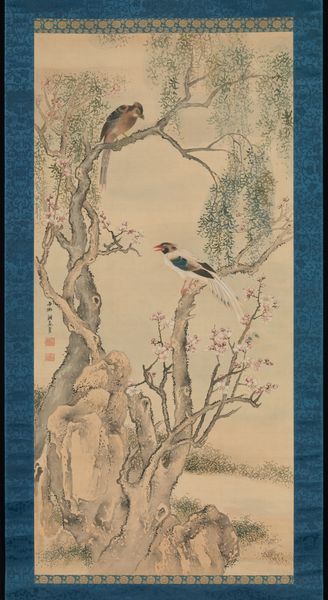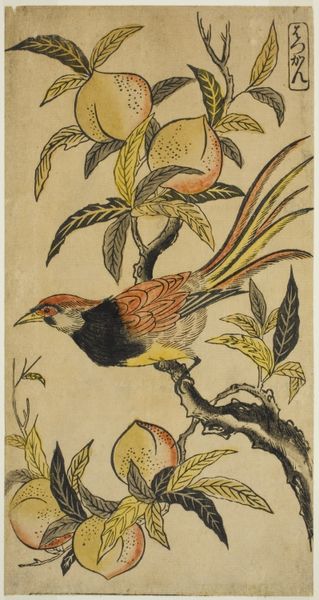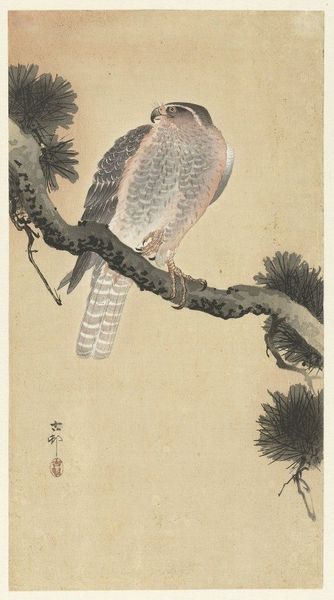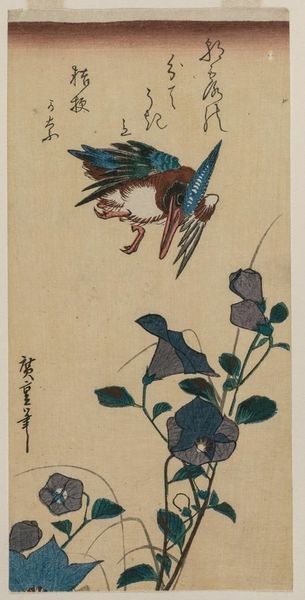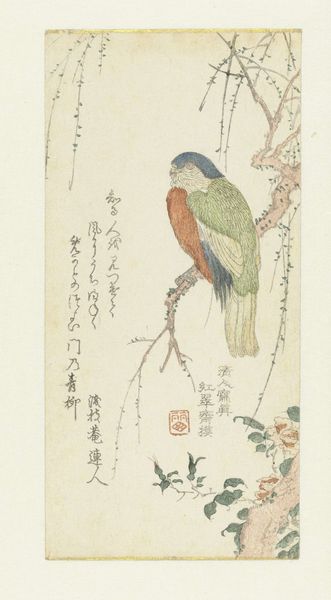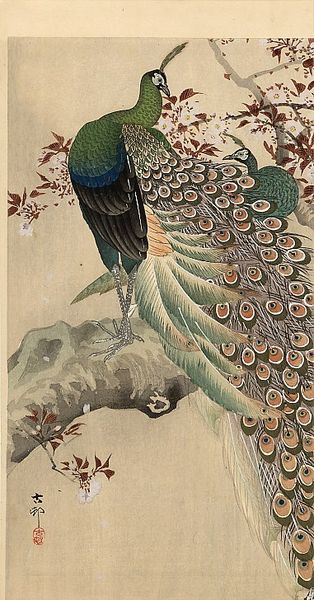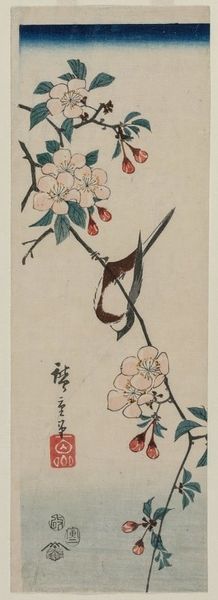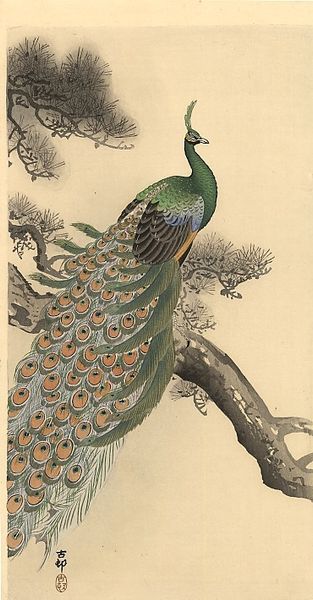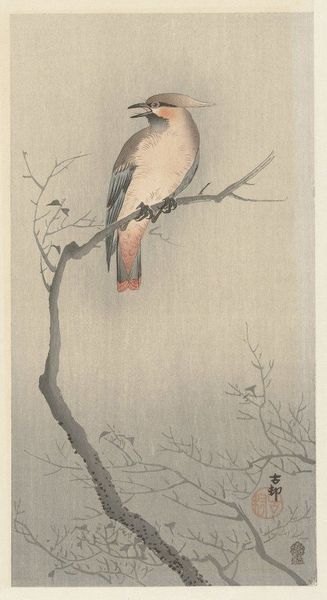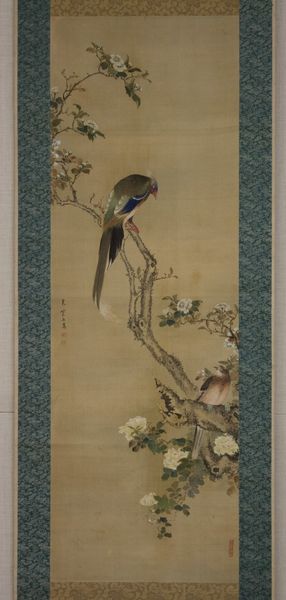
print, watercolor, woodblock-print
#
water colours
# print
#
asian-art
#
landscape
#
ukiyo-e
#
figuration
#
watercolor
#
woodblock-print
#
mixed media
Copyright: Public Domain: Artvee
Editor: Here we have "Copper Pheasant by Snowy Waterfall," a woodblock print and watercolor by Utagawa Hiroshige, created in the late 1830s or early 1840s. The bird is strikingly rendered against the subdued tones of the snow and waterfall. What strikes me is the verticality, and the implied solitude. What do you see in this piece? Curator: Beyond the immediate aesthetic appeal, I see a reflection of Edo period social structures embedded in this image. Think about the role of nature in Japanese identity – a source of solace but also a carefully managed construct mirroring hierarchical societal arrangements. How might the solitary pheasant, perched above the cascading water, symbolize individual agency within a rigidly defined system? Editor: That's fascinating! I hadn't considered the social implications. It's easy to get lost in the beauty and miss the potential commentary. Are you suggesting the pheasant might represent a marginalized figure? Curator: Precisely. The ukiyo-e tradition, while often celebrated for its depictions of courtesans and landscapes, also offered subtle critiques of power. Consider who had access to leisure, art, and natural beauty during this period. Whose stories are left out of mainstream narratives? Editor: So, the artist might be using the imagery of nature to subtly question the existing social order. How radical! Curator: Indeed. It invites us to reconsider our own relationships with nature and social structures. Who benefits from the framing of natural spaces, and whose voices are silenced in the process? Editor: That gives me a lot to think about. I will never look at a nature print the same way again! Thank you. Curator: And I’ve enjoyed considering Hiroshige's composition through a contemporary lens. It highlights the enduring relevance of these works to current social dialogues.
Comments
No comments
Be the first to comment and join the conversation on the ultimate creative platform.
